Case Study
American University
Washington, DC
Zehnder Rittling helps American University achieve its climate change plan.
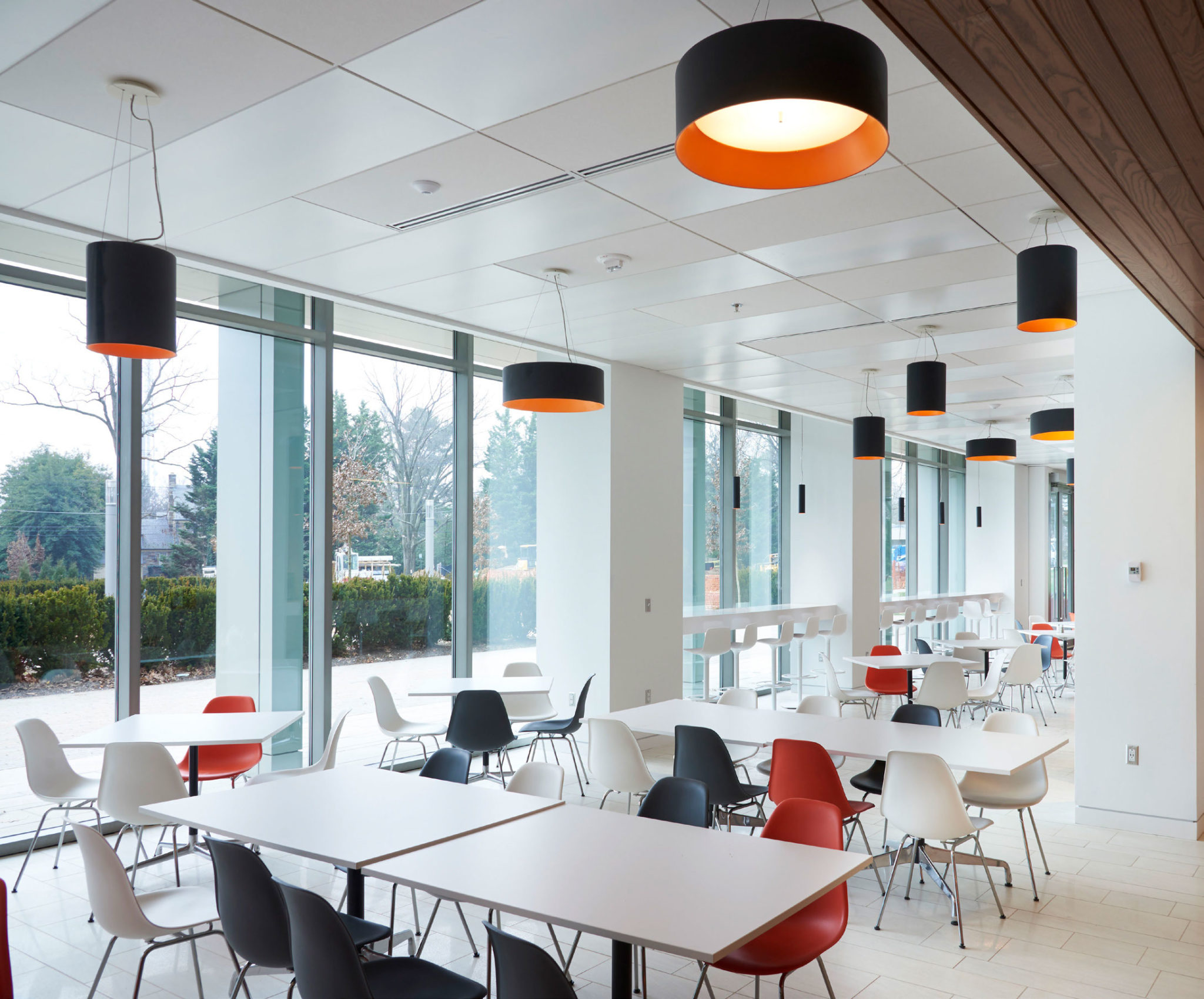
As American University (AU) marks the 120th anniversary in 2016 of its Washington College of Law, the private, independent and coeducational institution is also completing construction of Tenley Campus, its unique 8-1/2 acre law school near downtown Washington, D.C. Tenley Campus features 312,000 square feet of facilities and supports a student population of 2,000 and a faculty/staff of 500.
When American University began planning Tenley Campus, the goal was to define a prominent new identity for the law school while honoring the rich historic legacy of the site. Construction would embrace and incorporate the existing historic Capital Hall and its chapel and Dunblane House. The campus would also contain accessible green space for public access and enjoyment.
Energy and LEED certification would be two of AU’s main priorities in the construction of Tenley Campus. Ranked by the Sierra Club as one of the greenest colleges in the country, AU was one of the first universities to adopt a climate change plan, and remains committed to achieving climate and carbon neutrality by 2020. “It is important for the university – and our student body – that we are as green a campus as possible,” says David Hunter, Professor of Law and Director of International Legal Studies Program at American University College of Law. “That is very much a part of our global community commitment, which sends an important message to students who look for campuses that are sensitive to environmental issues.”
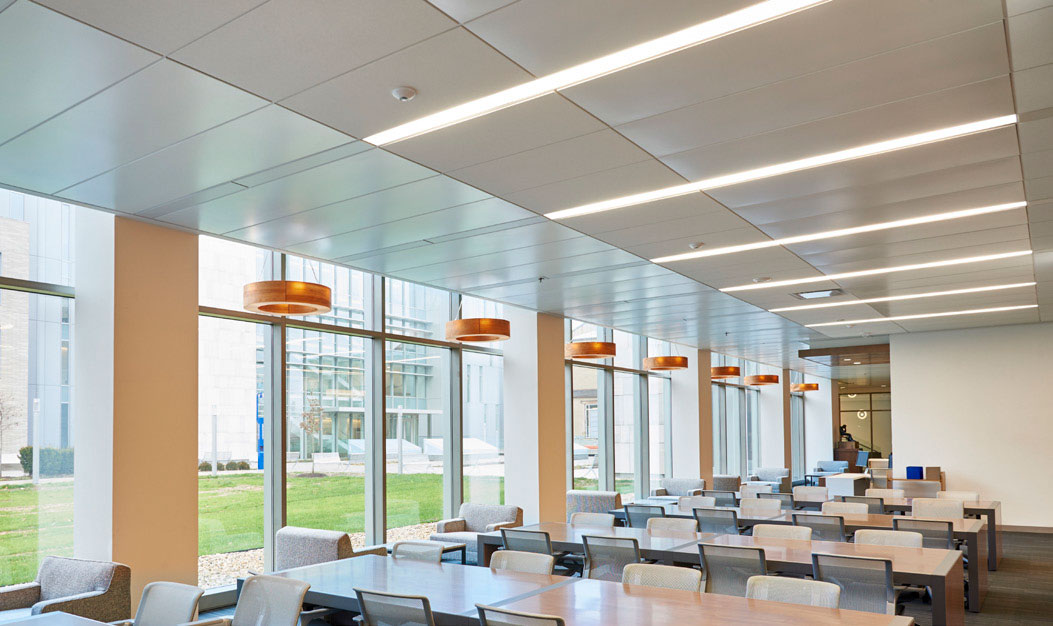
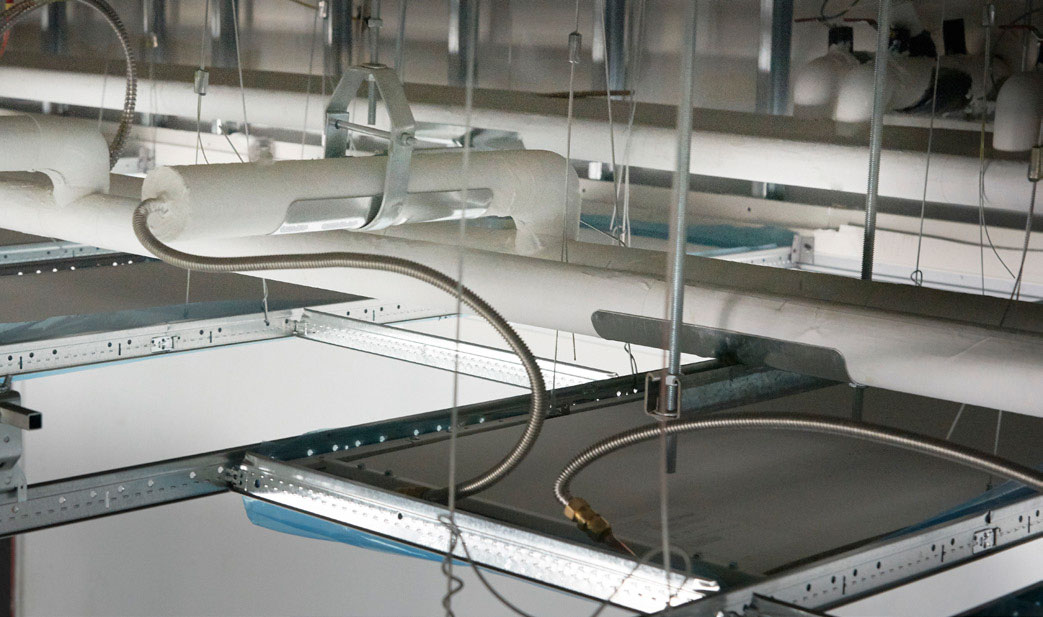
The Challenge:
Find an efficient, cost-effective HVAC system that will meet AU’s LEED and green criteria.
SmithGroupJJR, the design architects and engineers on the Tenley Campus project, were tasked with finding a heating and cooling solution that would meet AU’s criteria, including:
- Cost effectiveness
- Operational efficiency
- Provide a high level of thermal comfort
- Seamless integration with the Buildings’ architectural design
- Allow for easy installation of other ceiling components, such as AV, security, lighting and sprinklers
- Meeting AU’s LEED and green criteria
“Of course, the main objective is to create comfortable, temperature controlled environments people will enjoy using,” says Hunter. “But because of our commitment to the environment, the system also had to be energy efficient, cost effective, easy to maintain and operational.”
“As with any project, there were design challenges with the AU project,” says Brian Coffield, PE, LEED, AP BD+C, SmithGroupJJR Principal. “The buildings were spread out, meaning we’d need a lot of ductwork for the heating and cooling system. Also, there were concrete beams that ate up a lot of ceiling space, we had very little roof space to work with and, in some areas, such as the library and classrooms, AU wanted higher ceiling heights, which was limiting.”
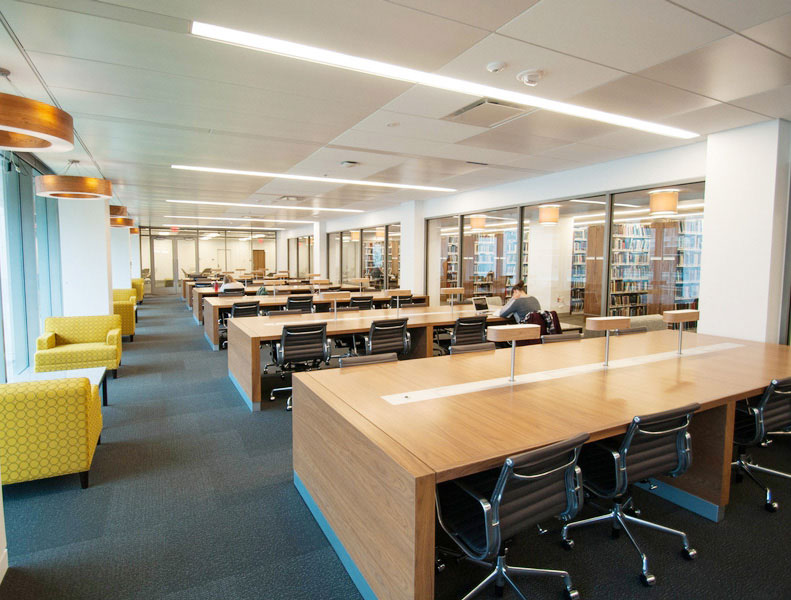
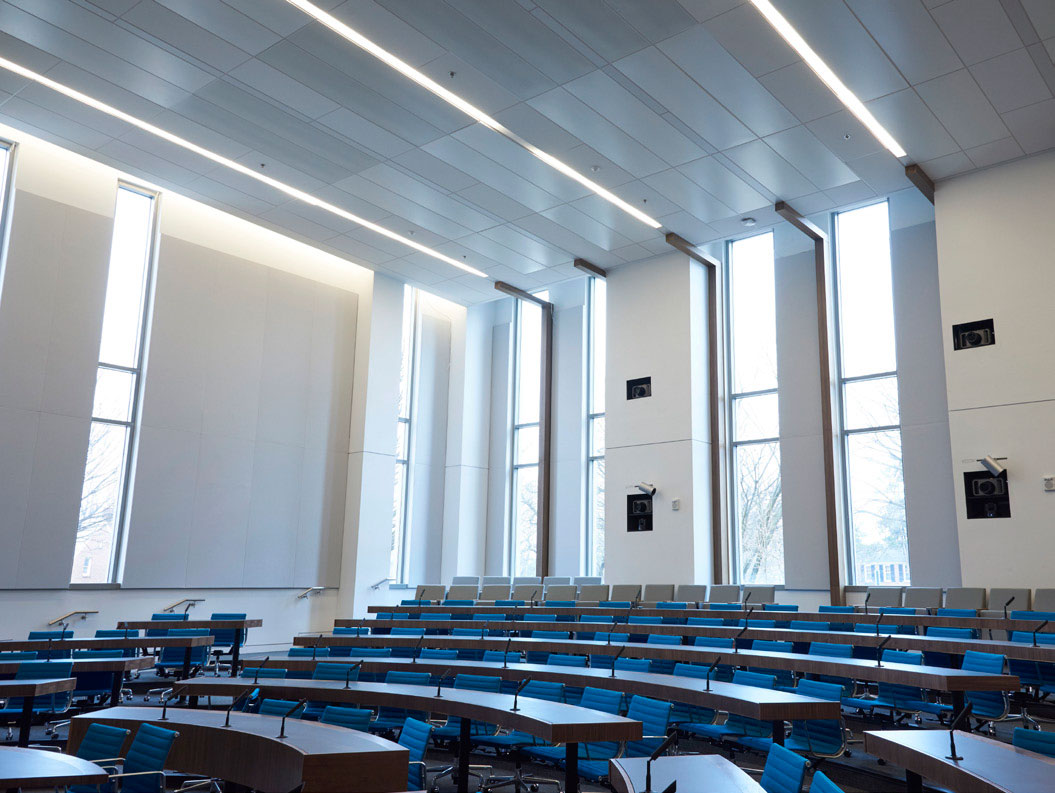
The Solution:
Zehnder Rittling Carboline Panels
Zehnder Rittling Carboline is an elegant and innovative response to modern indoor climate control requirements. Its high and even surface temperature – a product of the thermal conductivity of the graphic layer – is considerably more energy efficient than conventional systems, and can be easily and practically integrated into new or existing grid and suspended ceilings.
Carboline panels not only deliver the cooling and heating energy to the space for conditioning, they also have other benefits over traditional systems, including:
- Very high heating and cooling output
- Extremely quick reaction time to temperature changes
- Simple and quick installation
- No drafts or dust dispersal
- Even heat distribution
- Virtually silent operation
- Perforated design for acoustic absorption (optional)
- Cool and heat with a single system
- High energy savings
- Low investment/operating costs
- Long service life
“We performed a 20-year lifecycle cost analysis, looking at upfront, operating and maintenance costs,” says Coffield. “The Zehnder Rittling Carboline system provides a 26 percent energy cost savings over the more traditional VAV systems, which is significant.
“Once we pointed out all the advantages of this system, particularly as they related to this project, American University was very open to going outside its comfort level and considering a system it was not familiar with,” says Coffield.
Ameen Khouri, LEED AP BD+C, was the lead project manager for Shapiro & Duncan, Inc., the mechanical contracting firm overseeing the installation of the more than 4,000 Zehnder Rittling Carboline Panels and the coordination between the different trades, such as ductwork, electrical and sprinkler.
“We originally assumed a two-man crew could hang six to seven radiant ceiling panels each day,” says Khouri. “However, once the hangers were installed, we realized the two-man crew was able to hang 40 to 50 panels each day, which greatly exceeded our expectations and made the job go much faster and more smoothly than we anticipated.”
“Zehnder Rittling personnel walked us through every aspect of what we needed to do, where we needed to be proactive and what the proper steps would be to ensure an easy installation,” says Scott Horstkamp, Shapiro & Duncan project foreman. “Their help was vital in making this all come together smoothly, and they were very helpful every step of the way.”
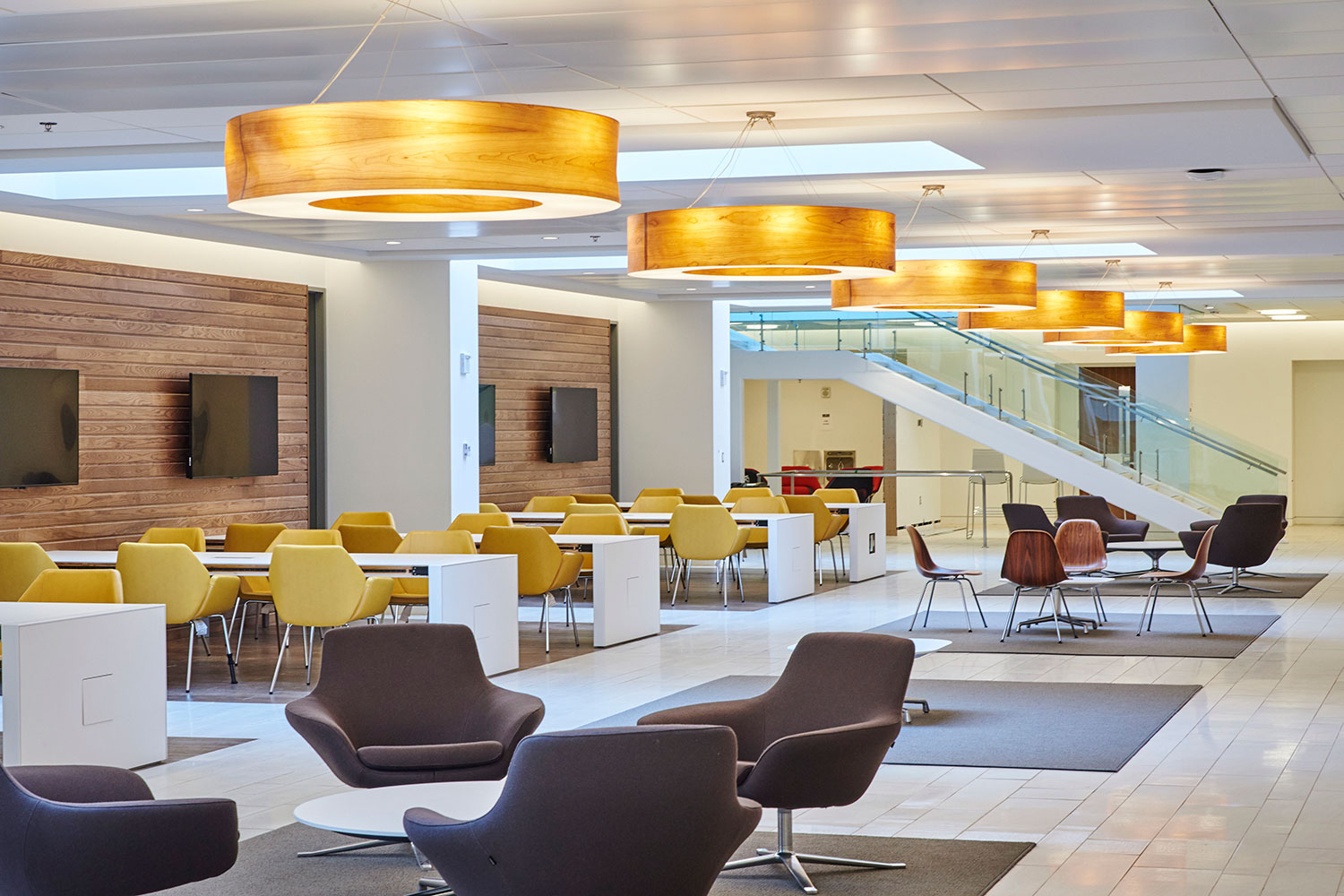
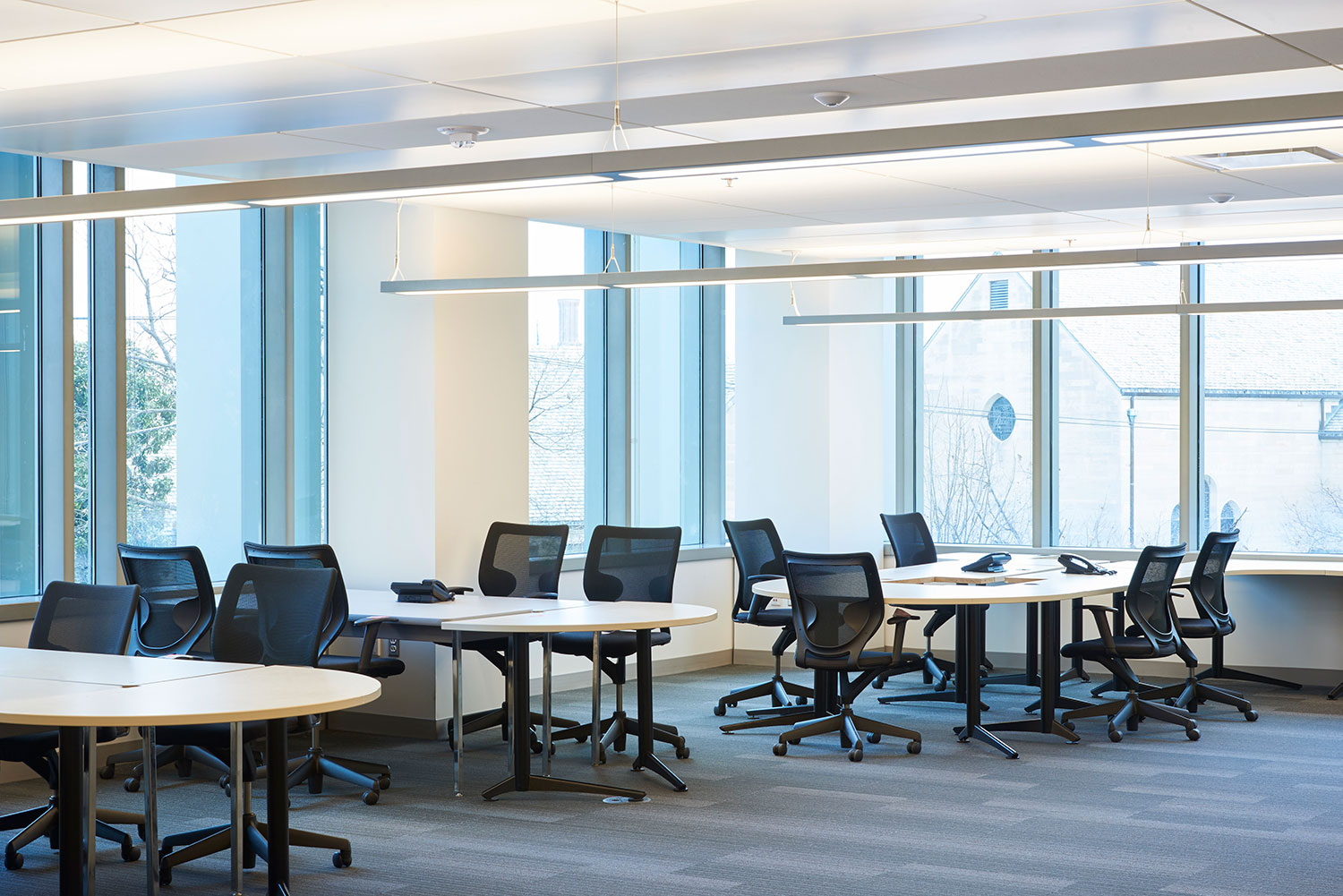
The Result:
A system that is energy efficient and aesthetically pleasing.
In utilizing a radiant panel system, American University has lowered its operating costs by more than 25 percent over similar systems, as well as its maintenance costs, meaning the Zehnder panels will pay for themselves within 10 years.
From an aesthetic standpoint, the finished ceilings create a striking, clean and modern look throughout the buildings, and have garnered high praise from visitors to the campus.
“The Zehnder Rittling Carboline Panels were a great overall fit for American University,” says Hunter. “They’ve allowed us to create very attractive, beautiful buildings where people will want to spend time. At the same time, we are being good corporate citizens and are doing the right thing for the environment as well as our students, faculty and staff.”
